1983 Penny Value: How Much Is It Worth Today?
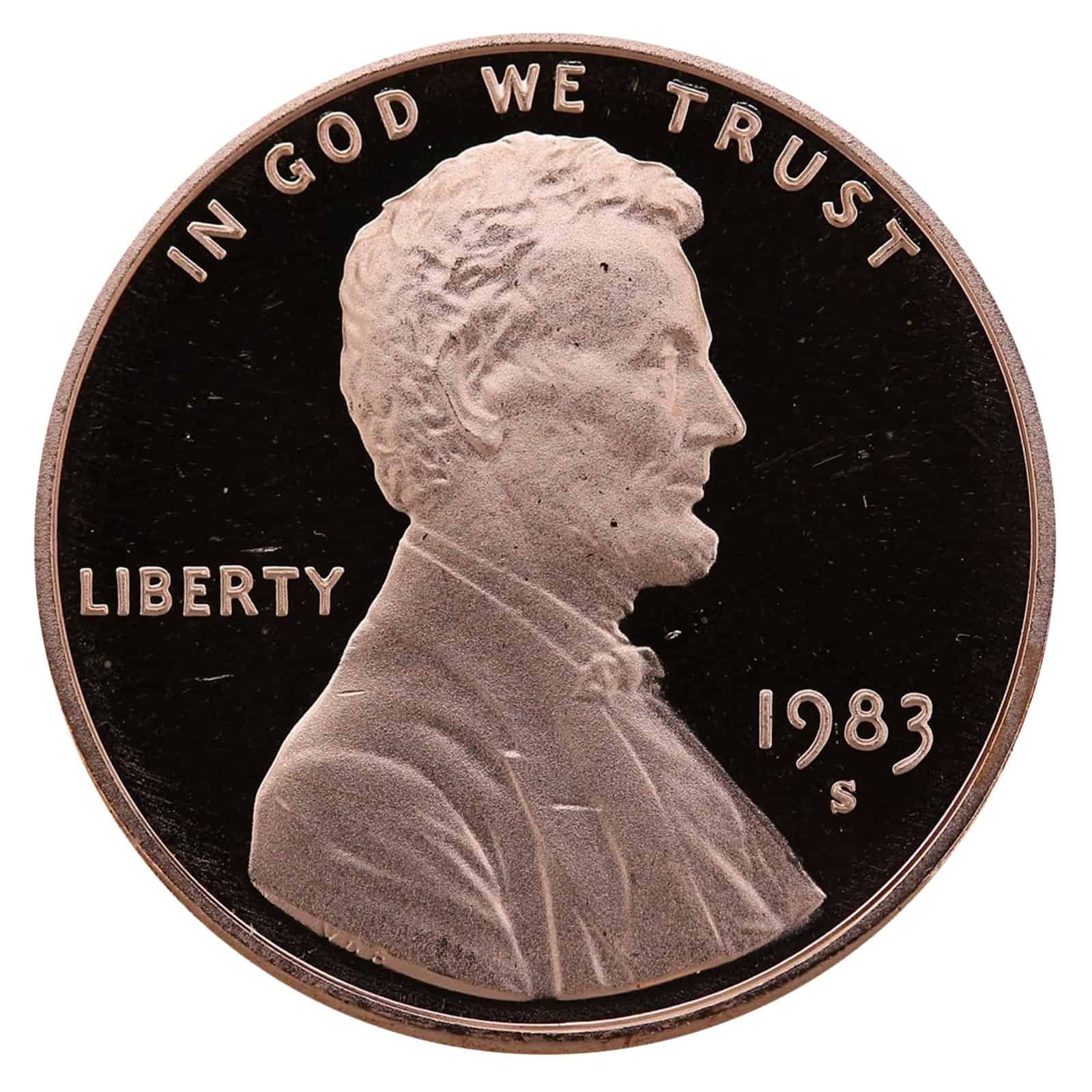
The 1983 penny is one of the more profitable coins for collectors. If you’re lucky to find one struck on a bronze planchet, you can get as much as $23,000 from it!
While this error is rare, you may spot other mistakes that can bring you some money. Likewise, you may find some coins in mint state conditions.
That’s why learning more about the 1983 penny value is vital. You’ll discover this – and more – below.
1983 Penny Value Chart |
||||
| Mint Mark | Good | Fine | Extremely Fine | Uncirculated |
| 1983 No Mint Mark Penny | $0.05 | $0.05 | $0.05 | $0.34 |
| 1983 No Mint Mark Double Die Reverse Penny | n/a | n/a | n/a | $290 to $8,500 |
| 1983 D Penny | $0.05 | $0.05 | $0.05 | $0.34 |
| 1983 S Penny | n/a | n/a | n/a | $3.38 |
1983 No Mint Mark Penny Value
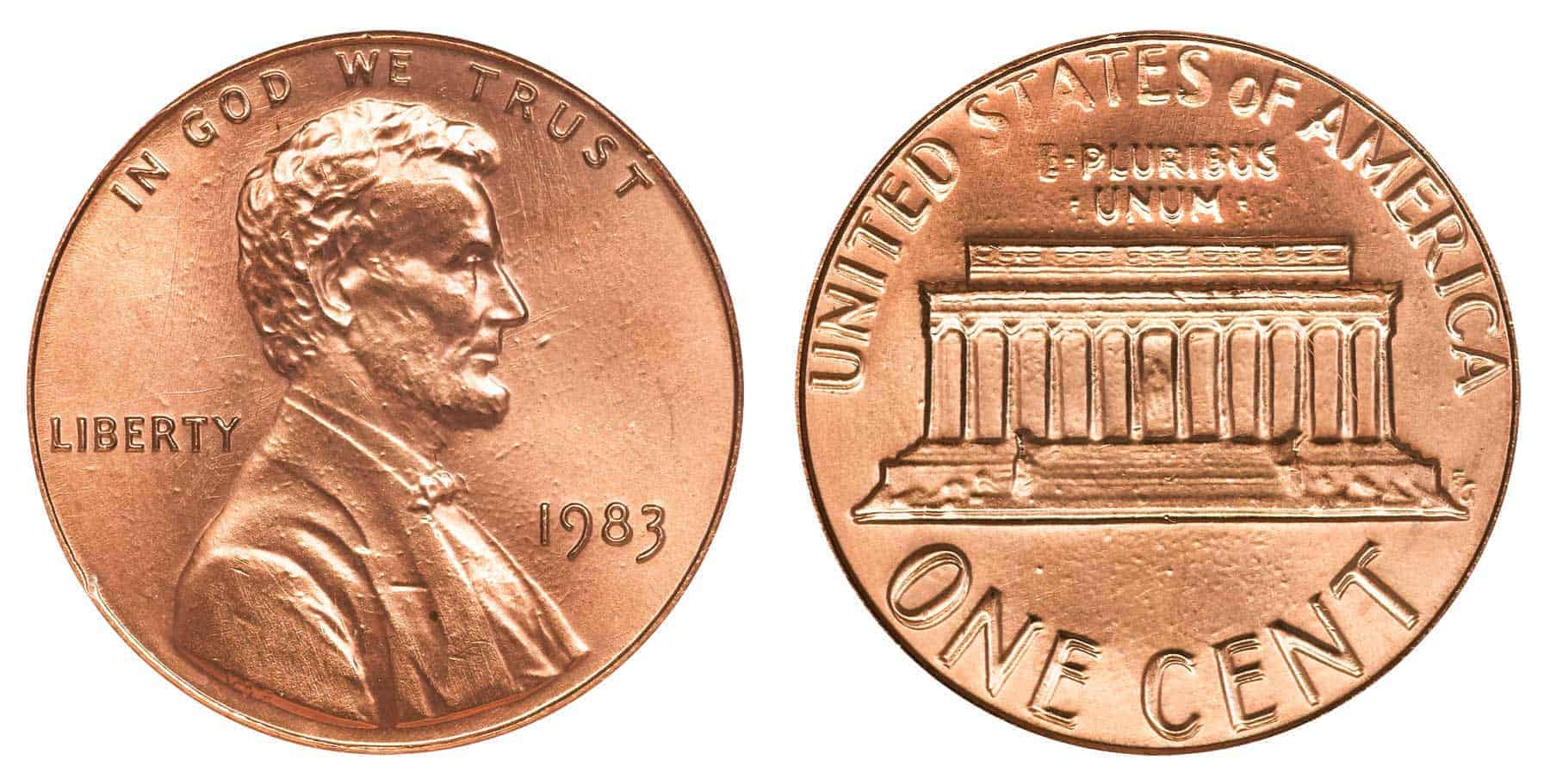
1983 no mint mark penny – also known as the Lincoln memorial cent – was produced in Philadelphia. The mint was launched following the 1792 Coinage act. It is currently located two blocks from the site of the first Philadelphia mint office.
A total of 7,775,235,500 coins were created in the said facility that year.
Compared to the older pennies, the 1983 Lincoln memorial cent is made with 97.5% zinc and 2.5% copper. This was the ‘new’ kind of composition used on coins minted after the year 1982. Before that, pennies were made with 95% copper and 5% tin and zinc – so they weighed heavier (3.11 grams.)
The 1983 no mint mark penny is made with mostly zinc, so it only weighs about 2.5 grams.
Design
1983 no mint mark penny features the Lincoln memorial design, a style that ran from 1959 to 2008. It replaced the Lincoln wheat cent, which circulated from 1909 to 1958.
The penny’s obverse side was created by Victor David Brenner, who also designed the Lincoln wheat cent.
His design features the profile of Abraham Lincoln, as well as the phrase “In God We Trust” on top. The word “Liberty” is on one side, while the year 1983 is on the opposing end.
As with most coins created in Philadelphia, there is no mint mark found under the coin’s production year.
The reverse side, meanwhile, was designed by US Mint Chief Engraver Frank Gasparro. This change in design was made to commemorate Lincoln’s 150th birth anniversary.
Gasparro’s design features the Lincoln Memorial Building, which, surprisingly, he hasn’t visited before making the design. Because of this, Gasparro’s design has drawn flak from many critics.
Some describe his design as something reminiscent of a ‘trolley car,’ while some describe it as an ‘artistic disaster.’ Regardless of these comments, Gasparro’s design remained on the reverse until the year 2008.
Value
Since 1983 no mint mark pennies are not particularly hard to find, their values can be pretty low. Coins in good, fine, and extremely fine conditions are valued at $0.05. Uncirculated coins, meanwhile, are priced higher at $0.34.
Prices of such coins may be higher depending on the color of the penny. Red coins, tagged RD, are 95% red. Such color can only be maintained in certain conditions, which is why RD coins sell higher at auction.
In fact, RD coins are priced anywhere from $5 (MS 63) to $575 (MS 68.)
Red and brown or RB coins may also sell more compared to Brown/BN coins.
1983 No Mint Mark Penny Double Die Reverse Value
About 5,000 1983 pennies – out of the 7.7 billion coins minted in Philadelphia that year – have what is known as the double die reverse error.
Design
As the name suggests, the entire backside has signs of doubling. This happens when the die is incorrectly manufactured. As a result, two images appear after the die is struck.
Such errors are visible in the texts “United States of America,” “E Pluribus Unum,” and “One Cent.” Doubling can also be seen on the Lincoln Memorial Building.
Value
An uncirculated 1983 penny with a double die reverse error is valued at the following prices:
- MS 63: $290
- MS 65: $425
- MS 66: $625
- MS 68: $8,500
That said, even lower-grade double die reverse coins can be sold for a pretty price. One graded as very fine was valued at $20.
1983 D Penny
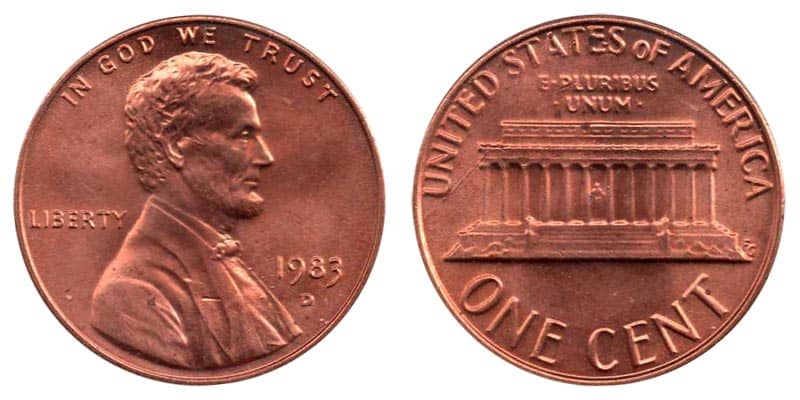
At 6,467,199,428 coins, the 1983 D penny is the second widely-printed currency in this list. These coins were all produced by the Denver mint, which has been operating since February 1906.
Despite the differences in quantity and production location, the 1983 D penny’s design and value are mostly similar to the rest of the Lincoln memorial cents in this list. It is made with 97.5% zinc and 2.5% copper and weighs approximately 2.5 grams.
Design
The 1983 D penny’s design features Brenner’s work on the obverse. As noted, it showcases Lincoln’s profile, as well as the phrase “In God We Trust” and the word “Liberty.” The only difference is that you’ll find the letter D mint mark under 1983.
The reverse side design remains uniform amongst all 1983 pennies. It features Gasparro’s Lincoln Memorial Building design, which has his initials FG near the staircase. It also includes the texts “United States of America,” “E Pluribus Unum,” and “One Cent.”
Value
The value of the 1983 D penny is similar to that of the no mint mark penny. It’s worth $0.05 in good, fine, and extremely fine conditions.
Uncirculated pennies, meanwhile, are valued at $0.34 a pop. The higher cost is due to the fact that they are in mint condition. As such, they don’t have the scratches that most circulated coins have.
Again, red color 1983 D pennies may sell for higher at auction. MS 63 grade coins are worth $5, while MS 68 coins sell for about $275.
1983 S Penny
The 1983 S penny is a proof coin minted in the San Francisco Mint location. This facility was first opened in 1854 to cater to the California Gold Rush mines.
About 3,279,126 coins were produced in San Francisco that year.
Despite being proof coins, the 1983 S penny retains the same composition, diameter, and weight as that of other 1983 Lincoln memorial cents.
Design
As a proof coin, the 1983 S penny has a sharper detail and a shiny, mirror-like surface. They are struck at least twice and treated with unique dies. As a result, that design is more defined and detailed.
Likewise, 1983 S pennies are known to have mirror-like backgrounds.
Proof coins are scarce in quantity, too, for the Mint needs more time and effort to produce such kinds of currencies.
Value
A 1983 S penny proof coin is worth about $3.38. That’s because such coins are collectors’ items, meaning they are priced higher because of the ‘special’ components they contain.
Yet, depending on the grade, the 1983 S penny may cost lower or higher.
A PR 63 coin is worth $2, while a PR 64 penny is worth $4. A PR 65 cent is valued at $5, while a PR 68 penny sells for about $7.
1983 Penny Value Grading
The 1983 penny, like other coins, is graded on a 70-point scale. Pennies in fine condition, for example, are deemed so because they show some detail despite being moderately worn.
Extremely fine coins, meanwhile, have sharp legends and clear devices. However, the coin’s high points show some signs of wear.
Rare 1983 Penny Error List
The value of a circulated 1983 penny may be low, but it can get higher depending on the mistake. As such, you need to look out for any of these rare errors:
1983 Penny Double Die Obverse Error
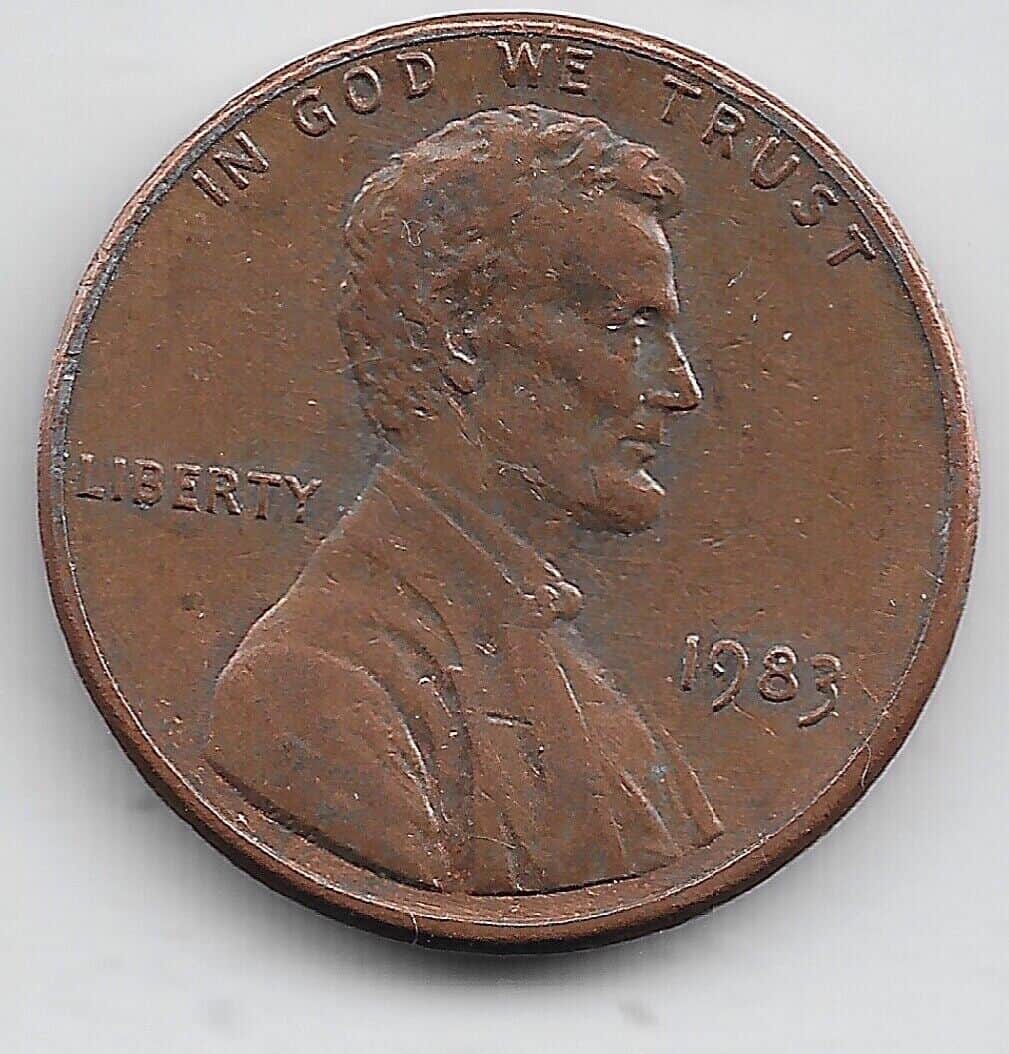
The most popular (and valuable) kind of 1983 penny is that with the double die reverse error. And, while the double die obverse error is not as popular, it’s something you should look for in your pennies as well.
In this coin, you’ll find the doubling on the word “Liberty.”
A 1983 penny with a double die reverse error can sell for about $300 (MS 65 grade.)
1983 Penny Extra Letters in Motto Error
As the name suggests, this erroneous coin features additional letters in the “In God We Trust” motto.
As displayed in the video above, an extra “G” and “O” may be found below/within the word “God.”
This mistake is said to result from a counter clash. It happens when a scrap steel piece is struck and/or counter-struck with a die.
A 1983 penny with extra letters can sell for about $150.
1983 Penny Struck on the Wrong Planchet Error
This deviation, which is found in Philadelphia and Denver-minted coins, is hallmarked by a difference in color and weight.
A ‘correct’ penny should weigh 2.5 grams. A 1983 Philadelphia penny that is struck on a bronze planchet weighs about 3.10 grams.
As for the 1983 D penny struck on a brass planchet, it’s also heavier at 3 grams.
Apart from the weight, a penny struck on the wrong planchet will have a different color. It won’t be the red or reddish-brown shade you’ll find in a copper penny.
This is by far one of the most expensive errors found in 1983 pennies. A Philadelphia-minted coin with this mistake has sold for a whopping $23,000.
1983 Penny Struck on an Unplated Planchet
Planchets manufactured after 1982 are plated with a zinc-copper alloy. However, some planchets miss this process. So when a coin is minted in this planchet, it will take on a grayish-white color.
A 1983 penny struck on an unplated planchet can sell for about $250.
1983 Penny Value FAQs
Are 1983 pennies worth anything?
Yes. Although most circulated coins are only worth about 5 to 34 cents, some 1983 pennies can sell for thousands of dollars. One good example is the 1983 Philadelphia penny struck on a bronze planchet, which sold at auction for $23,000.
What makes a 1983 penny rare?
Some features and/or errors make some 1983 pennies rare. For example, there are only 5,000 coins with a double die reverse error – out of the 7+ billion minted that year. This is one of the features that can make a 1983 penny rare.
How much is a 1983 D penny worth circulated?
An uncirculated 1983 D penny is worth $0.34. But, depending on the color, it may sell for as much as $275 (MS 68 grade.)
How can you tell if a 1983 penny is bronze?
A bronze 1983 penny weighs more (3.10-3.11 grams compared to the usual 2.5 grams.) Another way to determine bronze content is by using a magnet. If it is not attracted to your coin, then the latter may be made up of bronze.
How do I know if my 1983 penny is copper?
Traditionally, pennies made after 1983 are made of zinc, not copper. But if you want to be sure, you need to weigh your penny. Copper pennies weigh 3.10-3.11 grams, while zinc pennies are only 2.5 grams.
Copper pennies have deep chocolate or warm orange shade, while zinc pennies have uneven, spot-like toning.
Sound-wise, a dropped copper penny ‘rings’ while a zinc penny ‘clicks.’
How much does a 1983 rare penny weigh?
A rare 1983 penny, such as one struck on a bronze planchet, will weigh 3.10-3.11 grams instead of the usual 2.5 grams.
What is the error on the 1983 penny?
Many errors plague the 1983 penny, such as:
- Double die reverse or obverse
- Extra letters in the motto
- Struck on the wrong planchet (bronze or brass)
- Struck on an unplated planchet
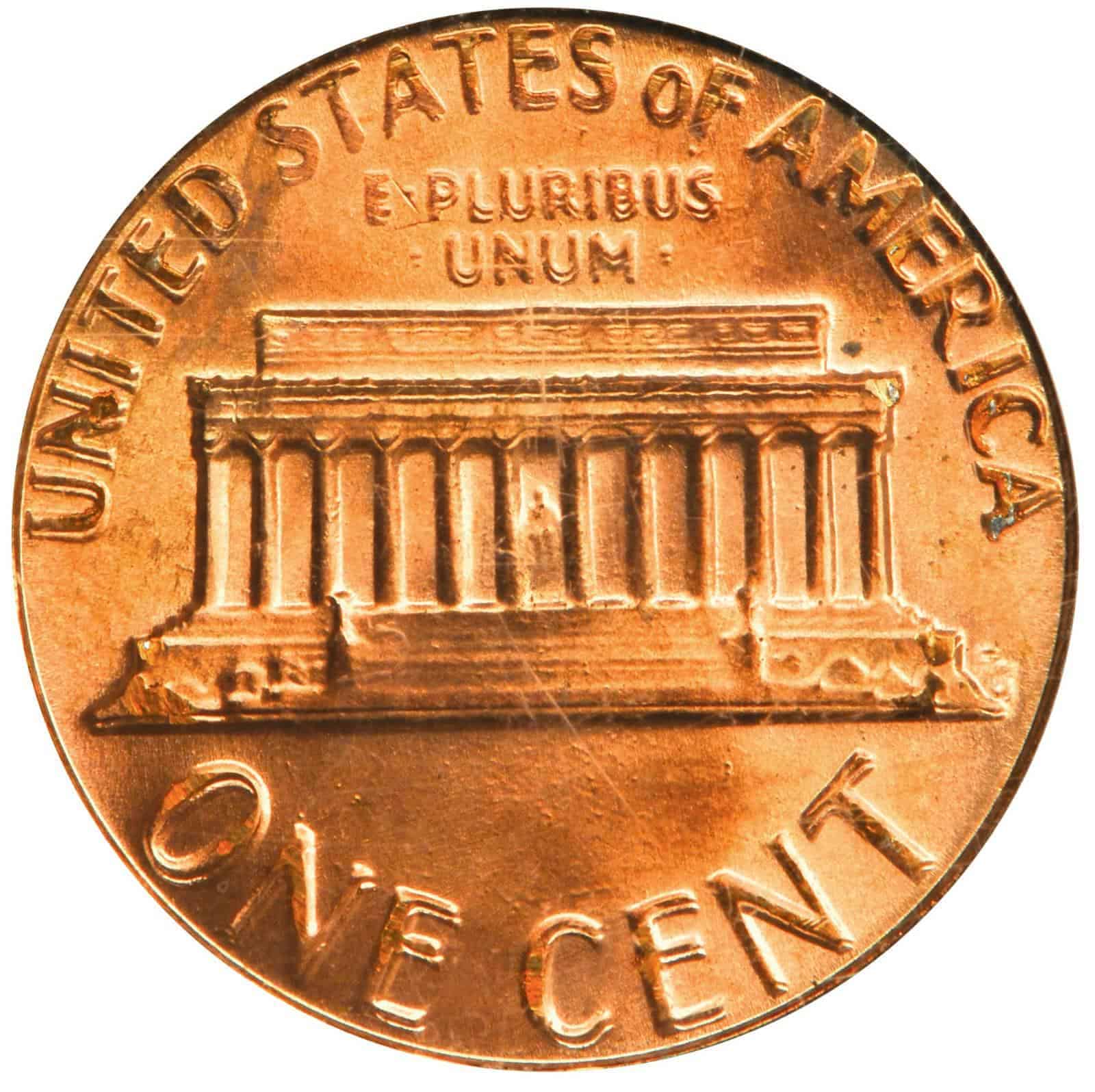
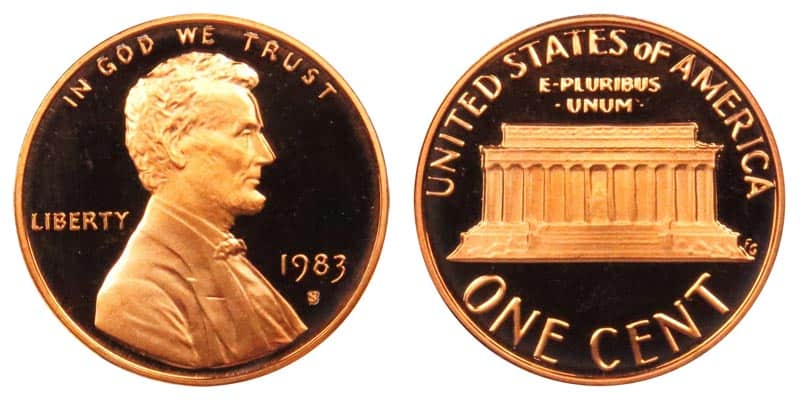
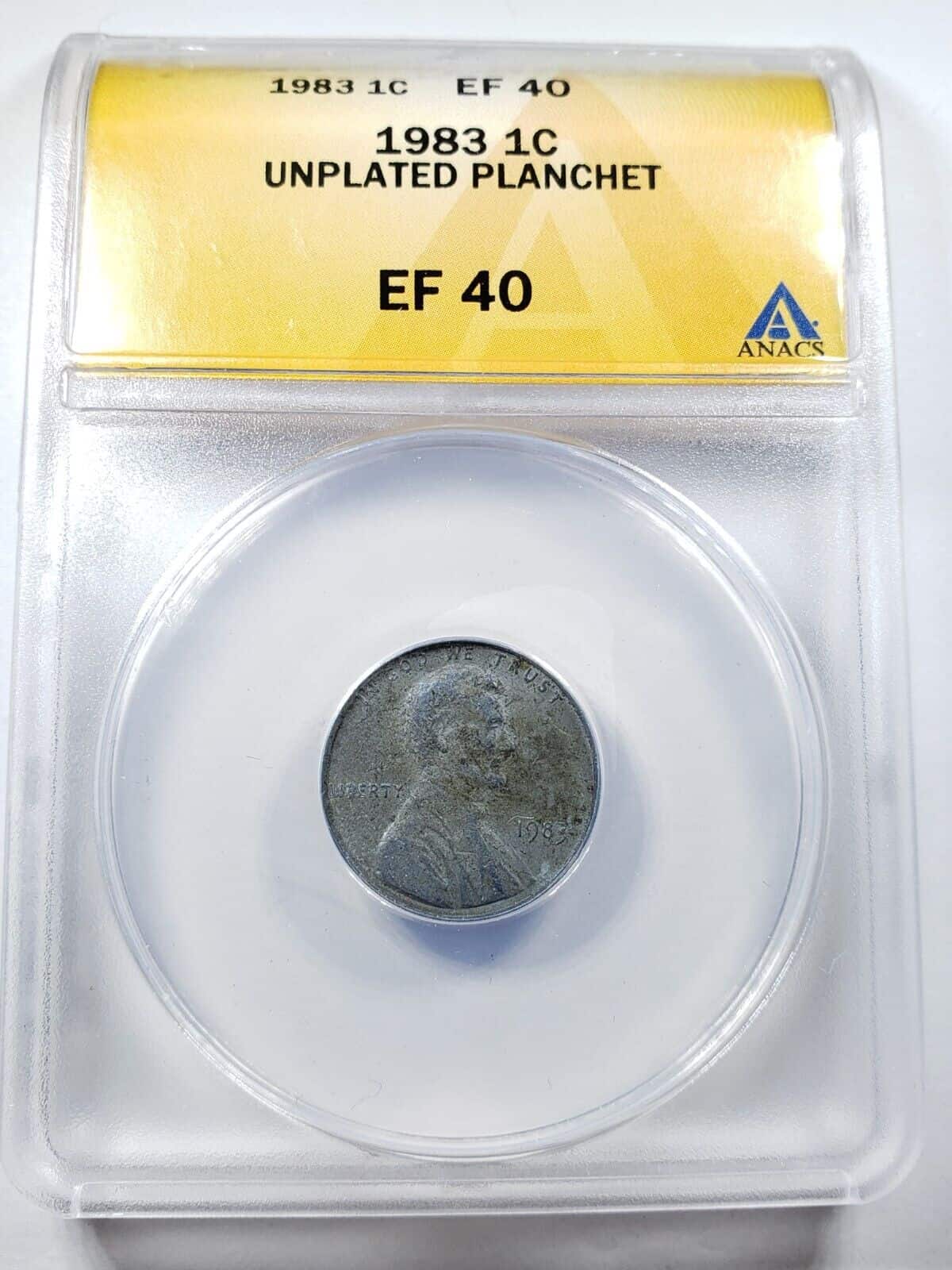
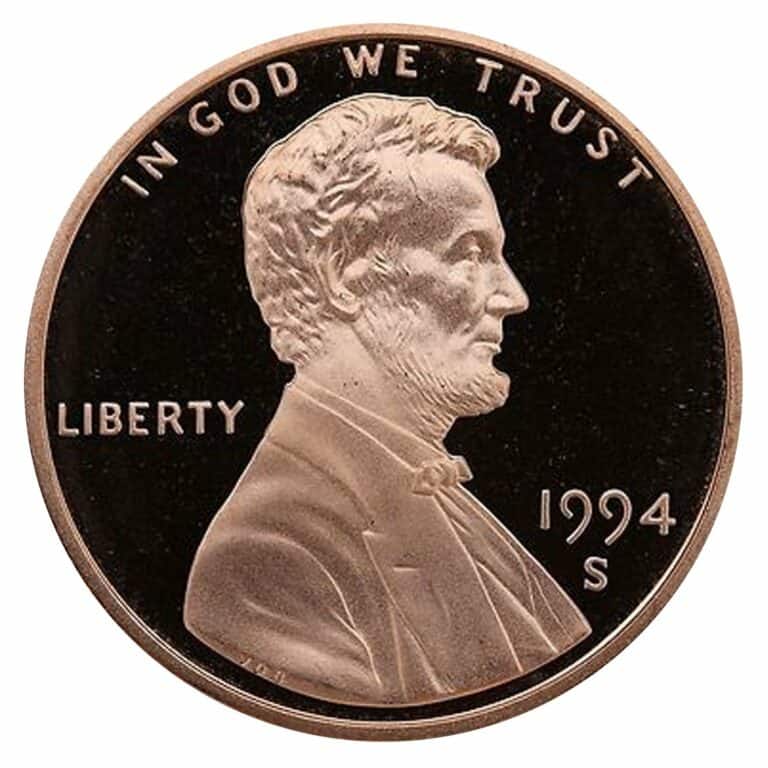
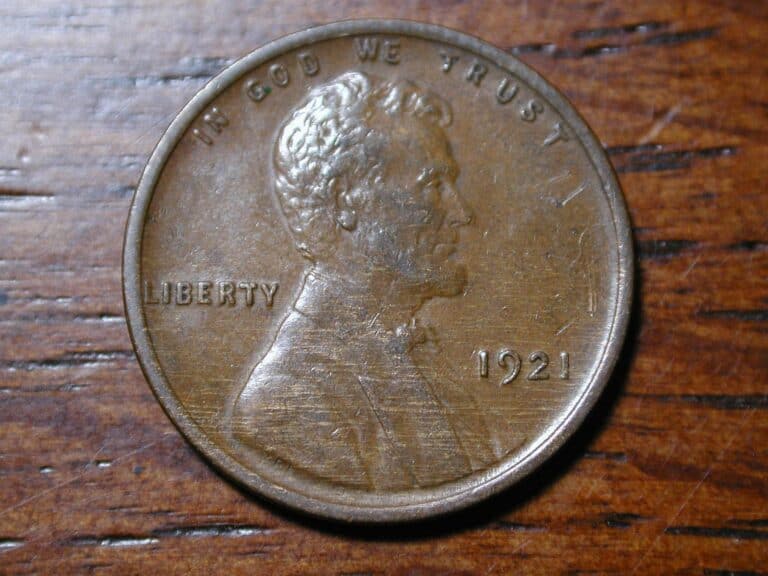
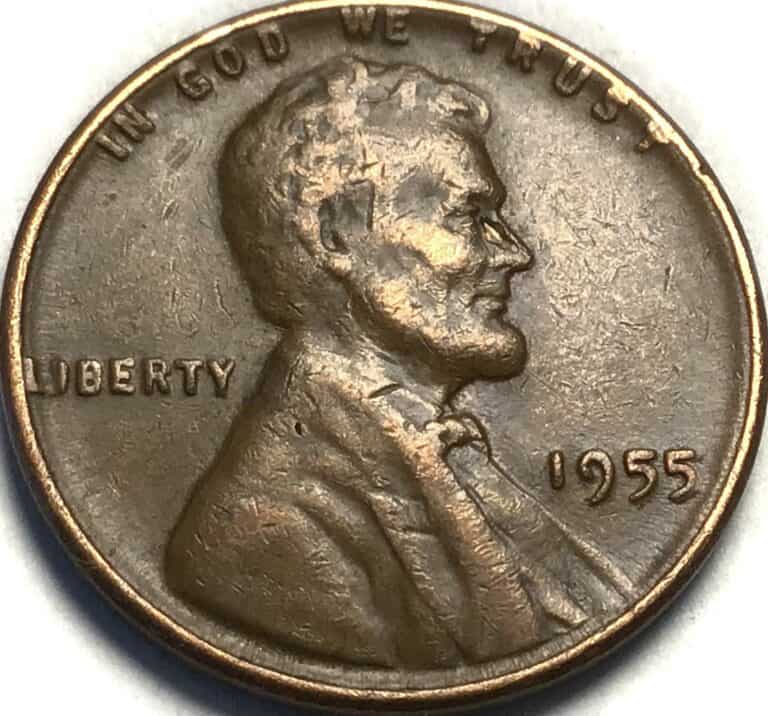
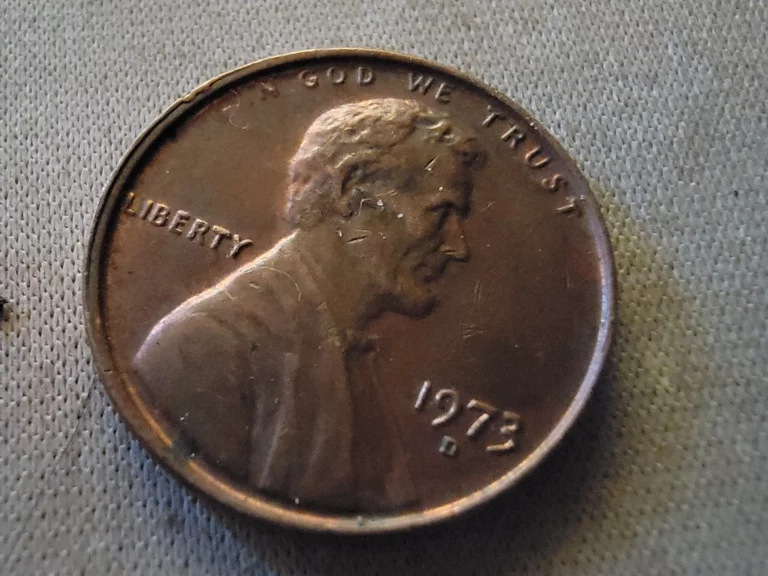
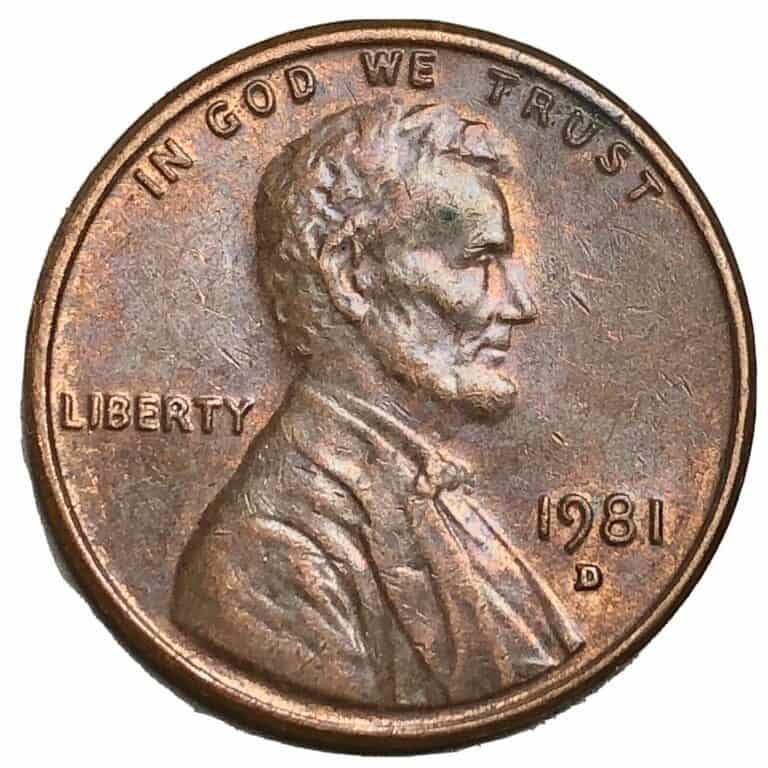
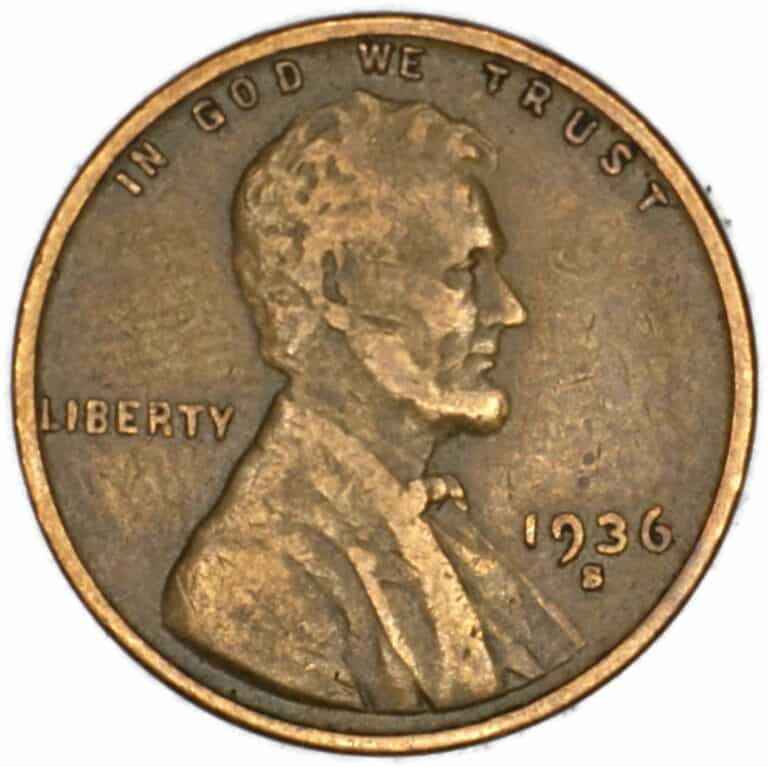
found a 1983 penny double d good condition how much is it worth?
I got two pennies Lincoln 1982 no mint mark and 1983 d mint mark are they having a value today?Thank you in advance